The most beautiful villages in Valais
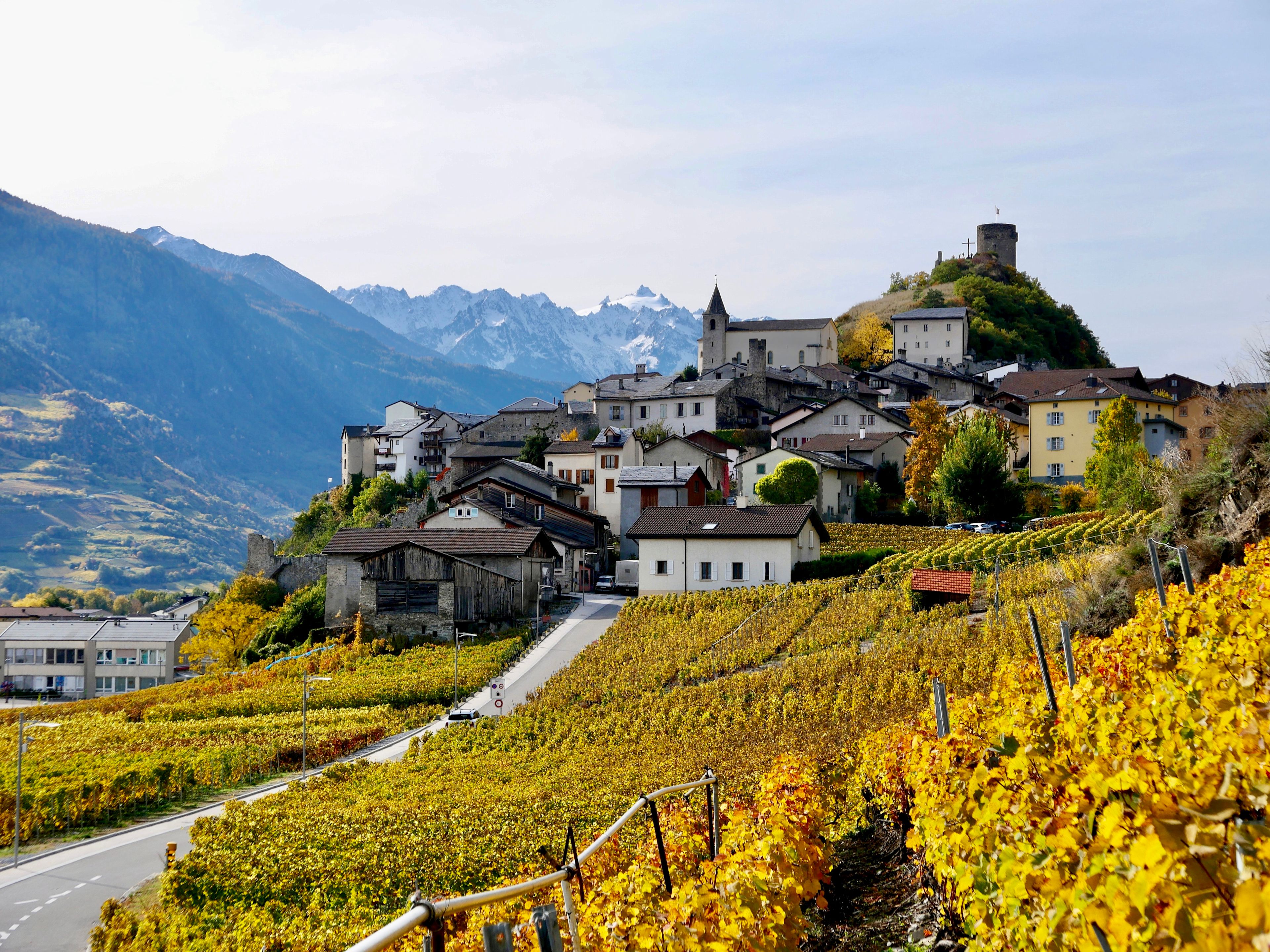
Nestling high up in the side valleys of the Rhône, many ancient Valais villages have preserved their architectural heritage and customs exceptionally well.
Beautiful old wooden buildings, bronzed by the sunshine, stand side-by-side with ancient barns and chalets decorated with geraniums, all bearing witness to centuries of uninterrupted mountain life. Explore these delightful villages, classified as the “most beautiful villages in Switzerland” by the association “Les plus beaux villages de Suisse”, discover their living traditions and immerse yourself in a world of unique and authentic charm.
Albinen
The delightful village of Albinen lies high on the sunny slopes overlooking the Dala valley, which leads up to the historical Gemmi Pass. The narrow cobbled alleys wind between chalets with wooden facades and barns balanced on four pillars each topped with a flat stone, as if perched on mushrooms: a picturesque huddle of ancient buildings framed by fragrant forests. Explore the Valais of long ago on an outing to the beautiful Leukerbad region, and discover a village that has managed to retain all its authentic historical charm.
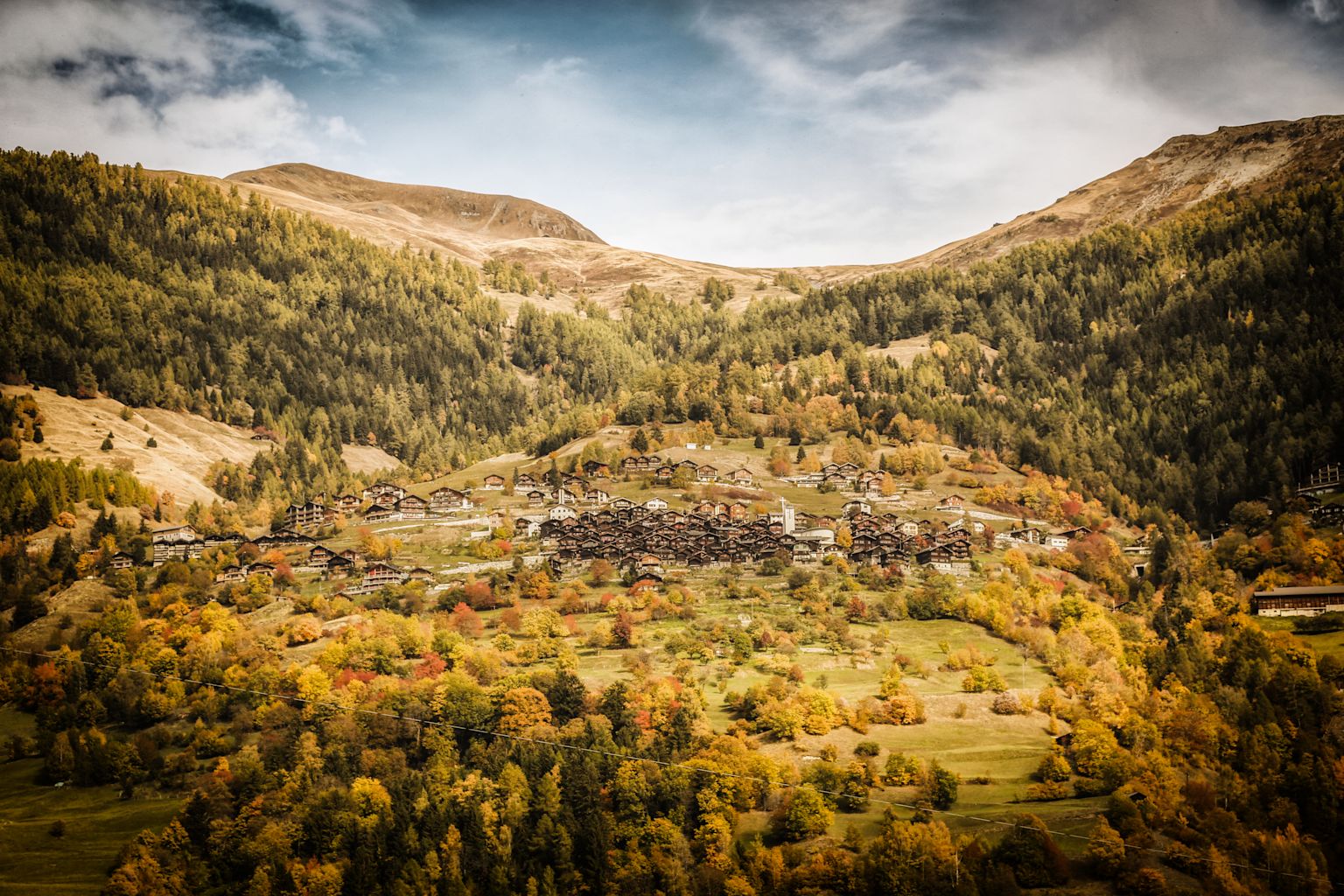
Évolène
Tucked away in the Val d’Hérens, Évolène is a village that has adorned countless postcards, a place where the Valais of long ago is still very much alive. It is not unusual to encounter locals in traditional costume: brown suit and tie for the men, long blue dress and colourful apron for the women, hair tied in a bun. This is a cultural heritage that people maintain and cherish – even younger generations, who continue to nurture the unique local Carnival traditions and the distinctive village dialect.
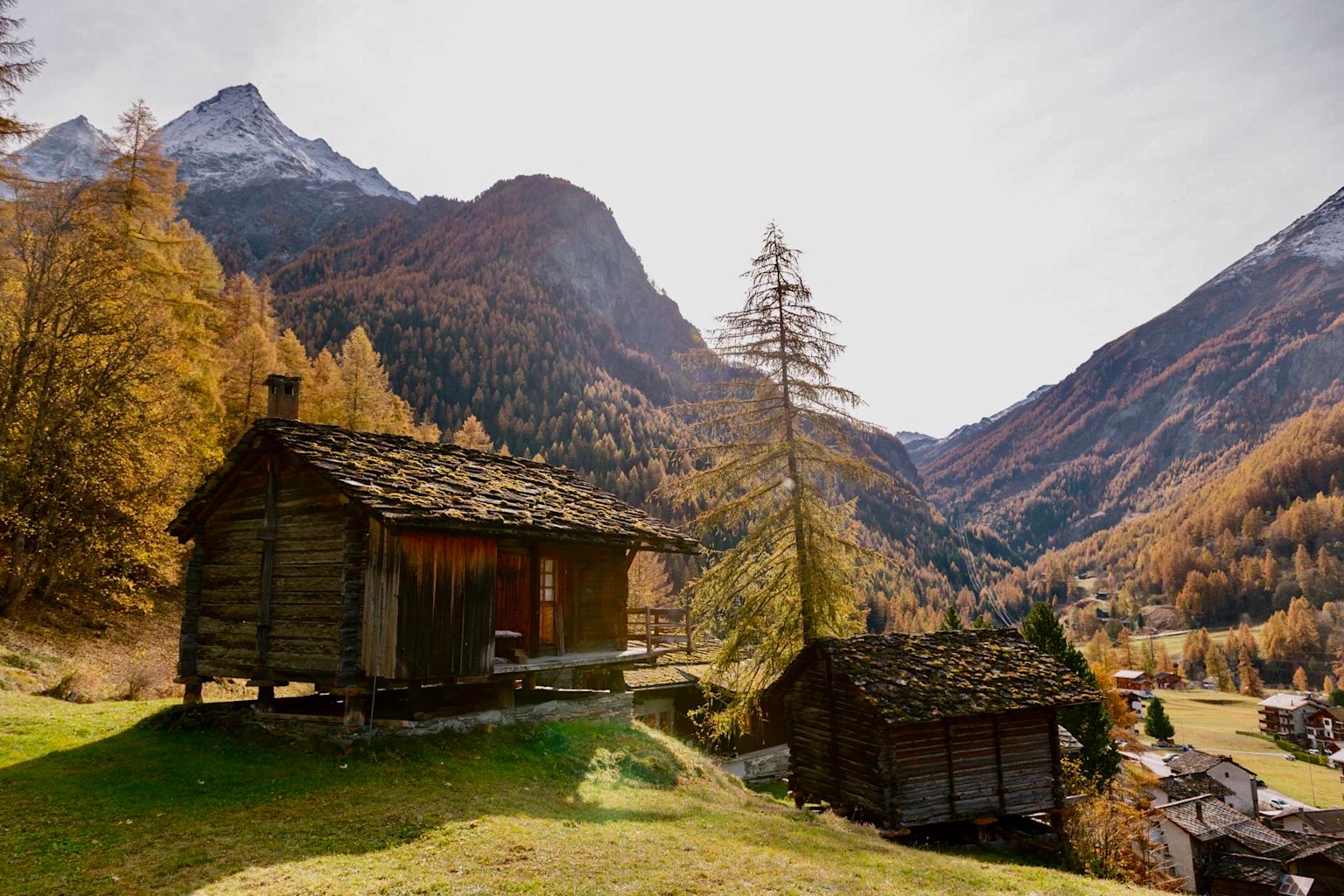
Ernen
Overlooking the Goms (upper Rhône) valley, the village of Ernen seems to have come straight out of a fairy tale. A pretty baroque church with an elegant wooden spire dominates the village, contrasting with the lush vegetation and raw rock of the wild alpine landscape. Chalets dating from the 15th Century frame a fountain that has seen a long history, witness of a rich cultural heritage that has been remarkably well preserved over the centuries. The facade of the Tellenhaus, for example, shows a scene from the story of William Tell painted in the 16th Century: Switzerland’s legendary freedom fighter is about to shoot an apple, balanced on his son’s head, with his crossbow under orders of the imperial bailiff. Make straight for Ernen’s village square for a delightful rendezvous with history!Tucked away in the Val d’Hérens, Évolène is a village that has adorned countless postcards, a place where the Valais of long ago is still very much alive. It is not unusual to encounter locals in traditional costume: brown suit and tie for the men, long blue dress and colourful apron for the women, hair tied in a bun. This is a cultural heritage that people maintain and cherish – even younger generations, who continue to nurture the unique local Carnival traditions and the distinctive village dialect.

Grimentz
You only have to stroll along the cobbled alleys of the enchanting village of Grimentz to immerse yourself in the Valais of the last centuries. A delightful church with wooden spire, ancient wooden farm buildings blackened by the sunshine, historical barns, and chalets with balconies cascading geraniums make Grimentz one of the most picturesque villages in Valais. This little corner of paradise continues to produce the last white wine blends with the Rèze grape variety, which has all but disappeared. The famous “Vin des Glaciers” (“Glacier Wine”) offers a taste of an ancient tradition that lives on only in Grimentz, a place in which times seems to stand still.

Niedergesteln
Founded by Savoyard merchants in the 11th century as a fortified trading centre, the structures dating back to that time are still recognizable in Niedergesteln today. The barons of Turn shaped village life between 1157 and 1357, resulting in the location also being called a knight's village. Nine knights carved in larch wood thus tell their story along the Ritterweg (Knights’ Road) to Gestelnburg. You can cross the Burghügel through an ice age cave and a suspension bridge leads over the Jolischlucht Gorge. Other highlights include a well-kept old farming village with its Wefa-haus and clock museum as well as the information room on the UNESCO Swiss Alps Jungfrau-Aletsch World Heritage Site on the first floor of the "Riedi-Schier".

Saillon
The fortified medieval village of Saillon perches on a hilltop, overlooking the Rhône valley. As soon as you pass through the ancient gateway, you sense history all around. From the dukes of Savoie to the bishops of Sion, the region’s rulers all coveted Saillon: you can see many vestiges of this golden age as you stroll along the village’s cobbled streets. Follow in the footsteps of Joseph-Samuel Farinet – a 19th-Century counterfeiter who earned the reputation of “Robin Hood of the Alps” and to whom the people of Saillon have dedicated a museum, a theme trail, a suspension footbridge and the world’s smallest vineyard. Explore Saillon’s fascinating history within and beyond its ancient walls before relaxing in the village’s thermal spa.

Simplon Dorf
Simplon Dorf (which means “Simplon village”) lies just a short way south of the famous Simplon Pass linking Valais and Piedmont; its architectural beauty offers a dramatic contrast with the wild mountain setting. Located at an altitude of 1,476 metres, the historical village has played a key role in cross-border trade between Switzerland and Italy for many centuries: Simplon Dorf has witnessed the passage of everyone from ancient Romans to the pioneering 17th-Century merchant Kaspar Stockalper, and from Napoleon to members of the religious community of the Great St Bernard, whose hospice at the Simplon Pass welcomes travellers to this day. The proximity to Italy and the passage of generations of merchants from Piedmont have left their mark on the village piazza, framed by impressive stone buildings. While horse-drawn carriages have given way to motorised traffic on the road up to the pass, the heart of Simplon Dorf has retained all its authentic charm.
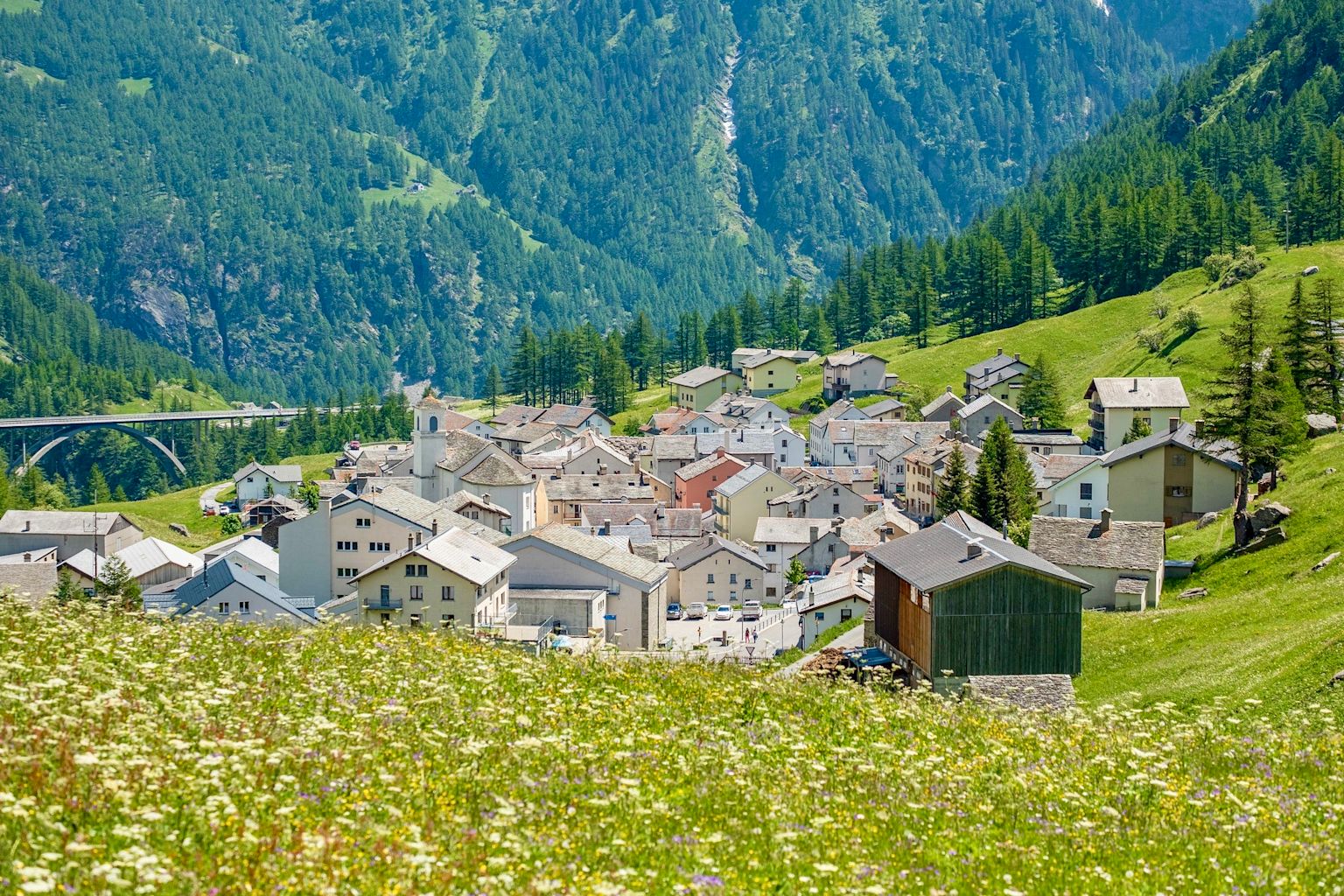
Selected by the federal inventory of sites of national importance to be protected in Switzerland, some other villages in Valais stand out for their architectural qualities, their geographical location and their exceptional heritage; real Alpine treasures that we invite you to discover.
Binn
Located in the Binntal, a steep valley in Upper Valais, the village of Binn boasts many treasures. This region is particularly abundant in crystals and precious stones; countless visitors have fallen under its spell including Winston Churchill, who appreciated the tranquillity and invigorating mountain air. A picturesque arched bridge, built in the 16th Century, spans the river Binna to link the two parts of the village. Traditional wooden chalets form an attractive architectural contrast to the Hotel Ofenhorn, built in the late-19th Century and full of Belle Époque charm. The village is accessible all year: a little paradise where hikers find peace and relaxation in an incomparable alpine setting.
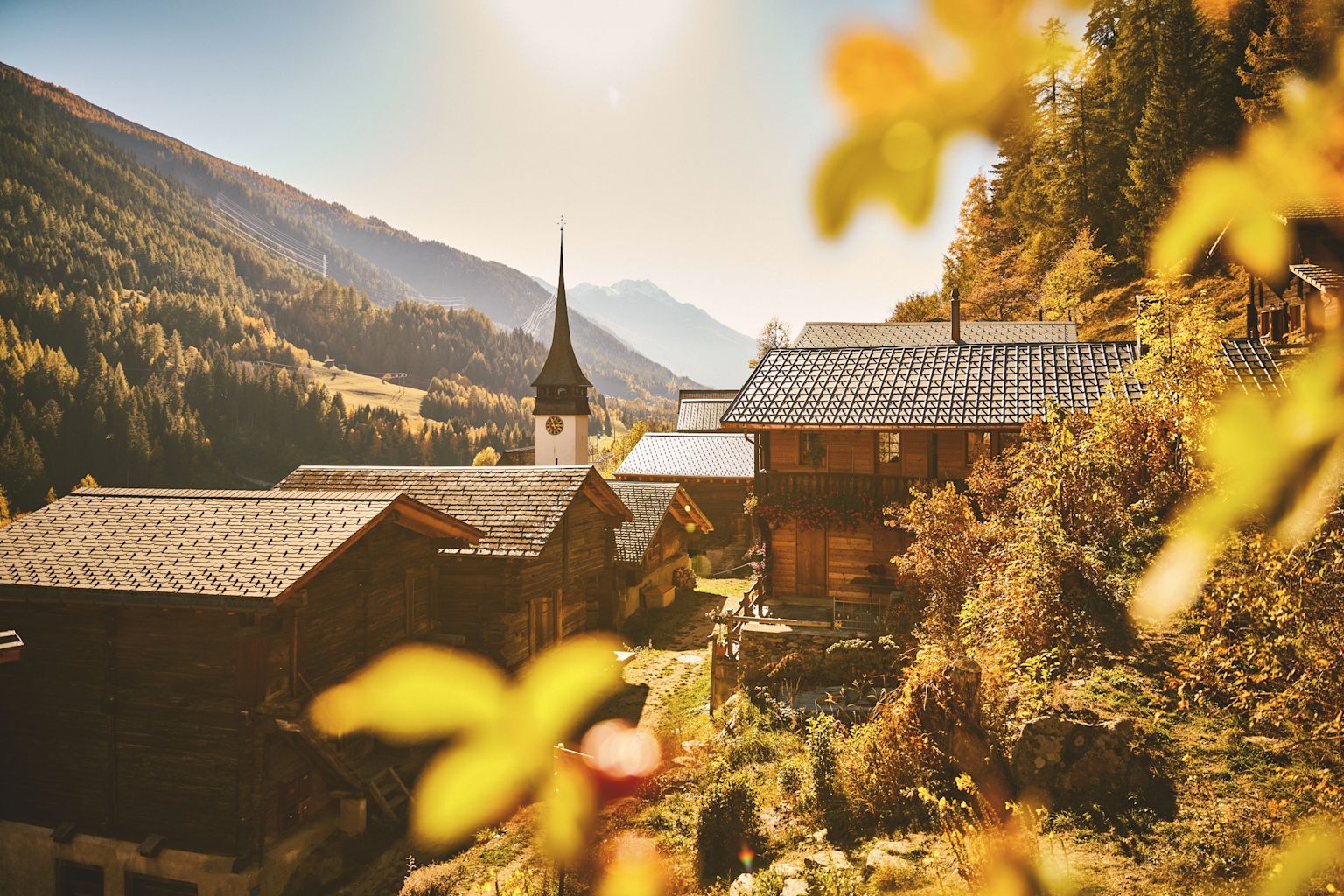
Chandolin
Basking at an altitude of nearly 2,000 metres on the sunny slopes of the Val d’Anniviers, the charming village of Chandolin almost seems to touch the sky. Framed by the “Imperial Crown” of five peaks above 4,000 metres, it offers a panoramic view of the most beautiful summits in Valais. The chalets of dark wood and natural stone sit perfectly among the surrounding forests of ancient larch trees. This is a little corner of paradise, far from city bustle, which has long attracted artists, painters and writers from far and wide, who find Chandolin a place of special inspiration.
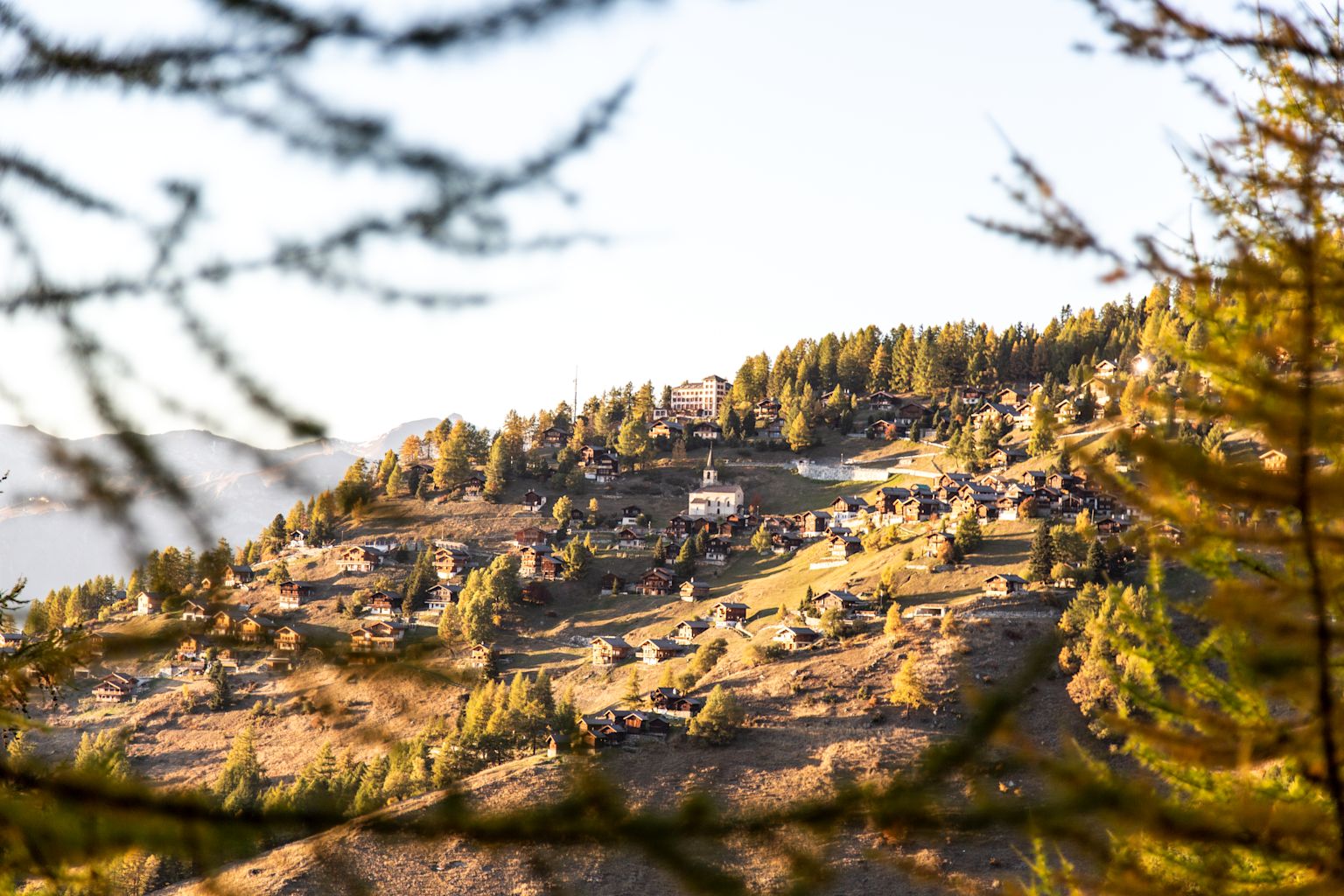
Finhaut
Set high up in the Trient valley, the village of Finhaut is a monument to the earliest days of tourism in Valais. Hotels built during the Belle Époque and a strawberry-pink church form a striking contrast with the wooden chalets of neighbouring hamlets. At Finhaut, 1,300 metres above sea level, time seems to have come to a standstill. The spirit of the Belle Époque lives on, however: a legacy from the early-20th Century, when this was one of the leading tourist destinations in Valais. You can experience this unique charm on a visit to this remarkable village surrounded by nature, as you follow in the footsteps of travellers long ago.
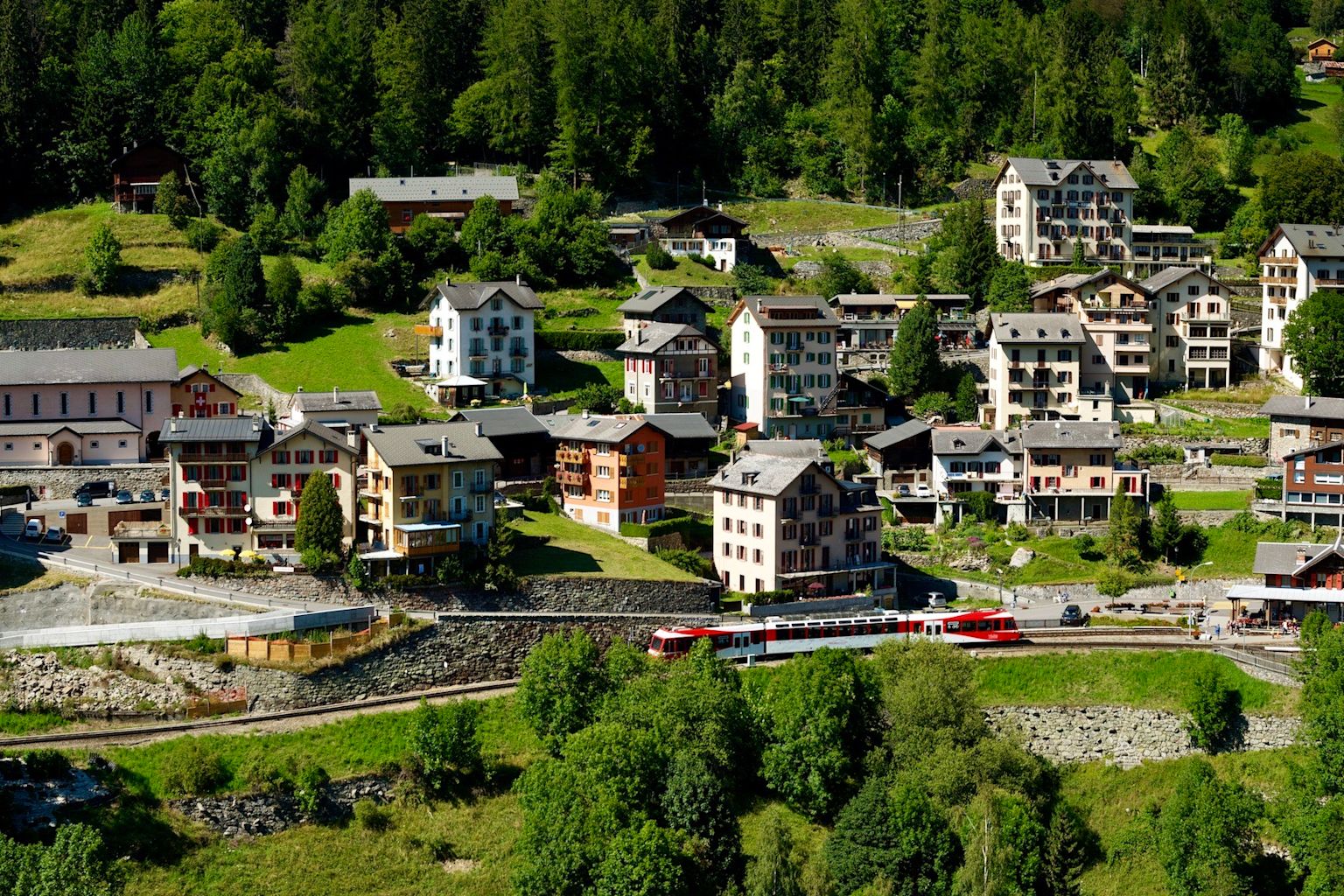
Niederwald
Nestling in the Binntal regional nature park, Niederwald appears not to have changed since its most famous ambassador, César Ritz, left to establish his hotel empire. A fine sculpture on the village fountain pays homage to the famous hotelier: he seems to be casting a protective eye over this community, whose cultural and architectural heritage is among the best-preserved in Valais. Follow in the footsteps of this hospitality pioneer by following the trail dedicated to him – and experience the authentic charm of this exceptionally pretty village of Upper Valais.

